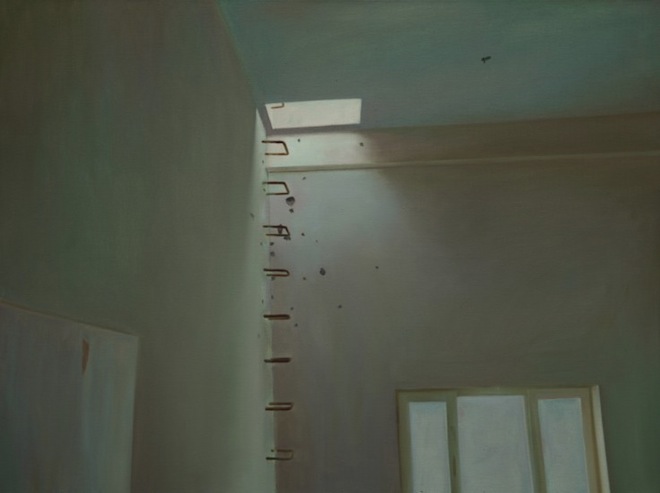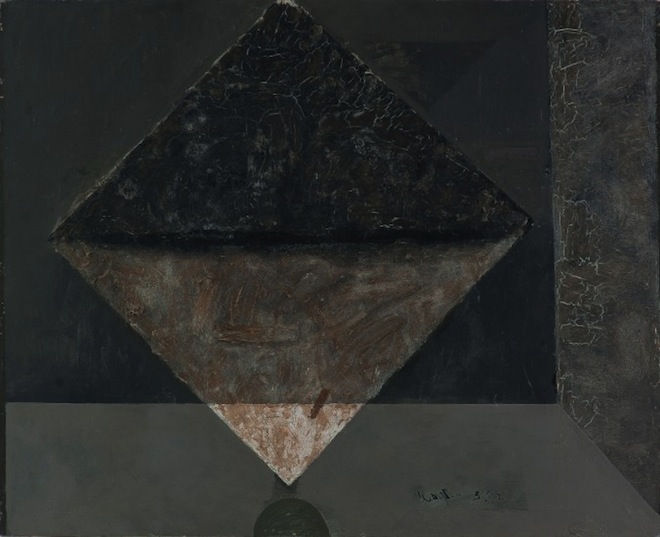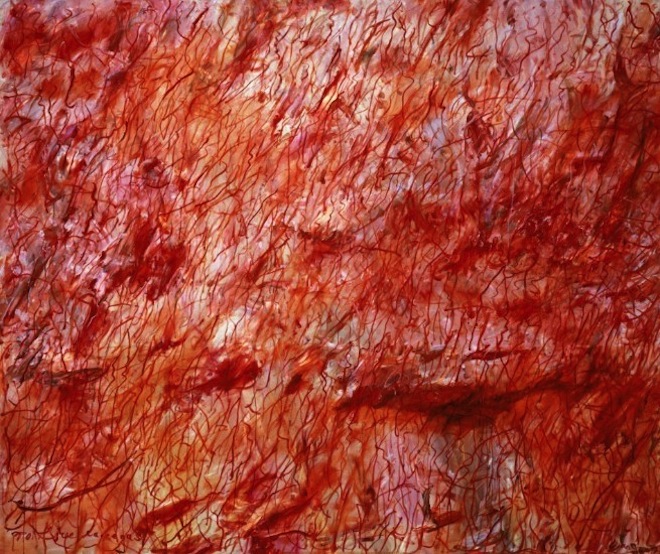News release
In gold autumn season, A Thousand Plateaus Art Space is pleased to present Wang Chuan & Chen Liangjie Joint Solo Exhibition.
·
Locus – Wang Chuan Solo Exhibition and Society as Still Life – Chen Liangjie Solo Exhibition
·
Duration: October 26 – December 15, 2013
Opening: 3:00-6:00pm, October 26, 2013 (Saturday)
Venue: A Thousand Plateaus Art Space,3-5 Southern District, Tiexiang Temple Riverfront, 699 Tianfu First Street, High-tech Development Zone, Chengdu
Contact: +86-(0)28-85126358,info@1000plateaus.org
Since the early 1980s, Wang Chuan (b.1953, Chengdu) became a representative artist of “Scar Art” on realistic oil painting Goodbye, Little Path and Lucky Survivors. In the mid-1980s, he decidedly abandoned narrative realistic painting and turned to new ink experiment. He organized Shenzhen’s first contemporary art exhibition “Zero”, and became a representative artist of modern fine arts in mainland, China. Early in 1990s, Wang Chuan began his experiment on abstract oil painting on canvas. After that, oil and acrylic on canvas, as well as ink on paper has been his main creation media.
In “Locus – Wang Chuan Solo Exhibition”, we will present Wang Chuan’s works spanning over 20 years between 1992 and 2013. Exhibited works include hard-edge abstraction “Vault of Time” Series (1992) in his transformation period, his representative oil paintings in 2006-2010 and ink paintings between in 2009-2013. From all the exhibited works, we can find Wang Chuan’s evolution in art. “Abstractionism” may be constraining the liberty of thoughts, but the “abstraction” is always liberating the perception and leading the audience to be aware of the width of their own experience. Wang Chuan’s “Locus” has been built by all his experience of life, which is the motivation and result of his paintings. As the famous critic Huang Zhuan said, “A constant theme runs throughout Wang Chuan’s art: Something or Nothing, which is the way to express it in the language of Taoism. To put it in Confucian terminology, it would be official court or retreat in nature; in Buddhist parlance, attachment or void; and soul or flesh in the language of Christianity. Such are, indeed, the great or fundamental issues his art is concerned with…Art is secular, sensual, and a matter of this world, but Wang Chuan always tries in his own way to turn it into something transcendental, rational, and a matter of the beyond. …through his experiences of art, he is more intensely engaged in religious contemplation by endlessly tackling, resisting, and making moves against worldly desires. His experience of death makes this even more startling…it is precisely such contemplation and quest that have given Wang Chuan’s art its remarkable simplicity and transparency. ”
Chen Liangjie (b.1971, Chengdu) was graduated from China Academy of Art, Department of Oil Painting. Like many artists born in 1970s, Chen Liangjie’s creations keep paying attention to society; however, unlike many artists of the same generation, in his works, there is no attitude toward reality.
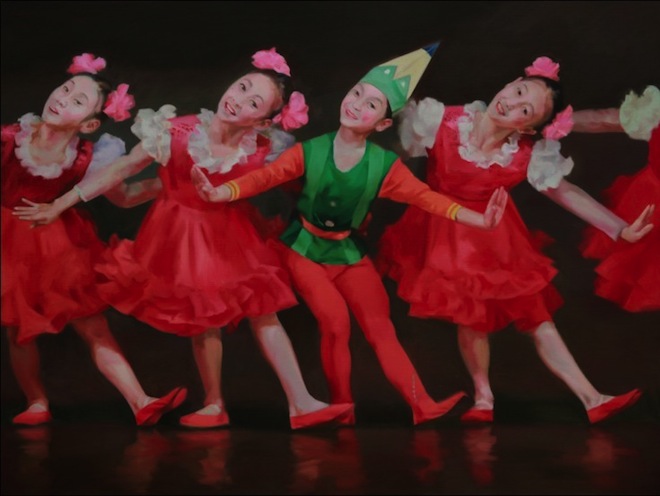
Chen Liangjie,”Childhood in North Korea No.2“,Oil on Canvas,150×200cm,2011
陈亮潔,《朝鲜的童年之二》,布上油画,150×200cm,2011
“For a very long time in Chen Liangjie’s works, he has tried to distance himself from the audience. He paints remote and open scene, while compresses the inner space, so that the space turns into flat, and one can only tell the distance according to the size in the picture… they always mentally consider them (characters in the picture) as ambiguous mini models, unrelated to us, like another existence. Once the people normally ignored by us are put into a scene without any context of daily life, “they” always present an abstraction of absence. The sense of distance between the works and audience come from two levels: visual perception and social psychology. In his recent works, it still exists, although in another way.”
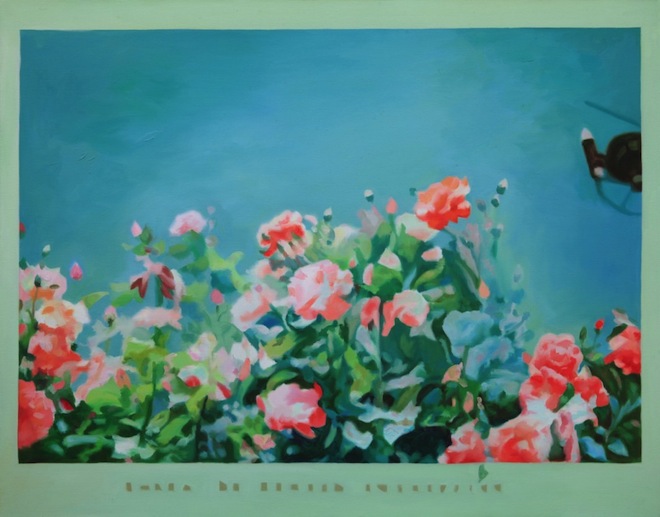
Chen Liangjie, ”The Horizon of International“,Oil on Canvas,90×115cm,2011
陈亮潔,《因特耐尔的地平线》,布上油画,90×115cm,2011
In the presented works of “Social as Still Life”, “Chen Liangjie begins to choose media images. The so-called media images are always “meaningful”. No matter to a terrorist attack, a huge accident or a piece of gossip social news, photographs and images are always been used in proving the authenticity of something. However, photographs are always ambiguous and even quirkish…When Chen Liangjie transfers those images from the news website to the canvas, he is actually restoring the opaqueness of the images’ inherent meaning…However, for the visual requirement of paintings, a photograph looks always empty, therefore, many “photographic paintings” use thick pigment and heavy brushwork. Different from them, Chen Liangjie makes pigment thinner and clear, making the brushwork vague and uncertain, it seems that he doesn’t recreate a painting with a photograph, but to reconstruct a photograph on canvas in the way of painting, and transfer the authenticity of photographs into the authenticity of paintings…. If there was some lyrical expression of life experience in Chen Liangjie’s early works, he has almost removed both the emotion elements of painting and the social meaning of photographs. Emotion has been restored into feelings, images have been restored into vision, while among those levels of restoration, painting has gained the nonconvertible authenticity.” (quoted from Bao Dong’s comments “The Authenticity of Painting ”)





